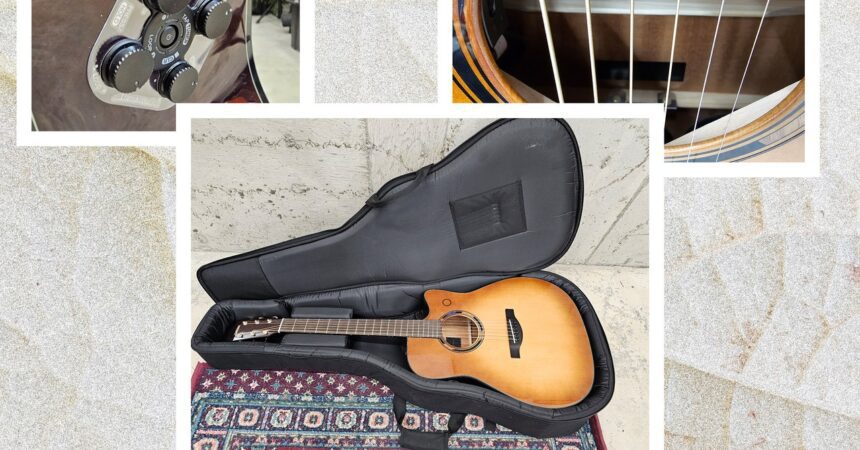Despite the collection of fancy electric guitars, amplifiers, and an impressive assortment of pedals, my preferred instrument for playing remains an old Guild acoustic guitar, which I often play on my couch. I find that it’s easier to work through new songs in the comfort of my living room, and the acoustic guitar’s portability and simplicity are unparalleled.
So, how does one enhance something that is already so practical and user-friendly? If you happen to be Yamaha, the answer lies in the new TAG3 C, which incorporates audio actuators, a built-in looper, Bluetooth capabilities, and effects like delay and reverb, not to mention a charging cable. With these features, Yamaha has fashioned an incredible piece of musical technology that retains everything I appreciate about my classic acoustic experience while allowing me to sound even better with minimal effort. It even includes a high-quality built-in tuner.
The looper, along with the reverb and delay effects, enables you to practice challenging sections by layering your own playing, work on solos over chord changes, and experiment with various styles and musical ideas. For those who are more skilled than I am, the Bluetooth functionality transforms this guitar into the perfect option for street performances without an amplifier or for lengthy practice sessions with backing tracks—just as long as your voice doesn’t require similar assistive technology.
Photograph: Parker Hall
The Ultimate Guitar
Guitar manufacturers have been reaching for new technological advancements with limited success for many years. Innovations in materials science, 3D printing, and milling techniques have resulted in some exciting new shapes and improved low-noise pickup options; however, not much has significantly changed regarding what makes a guitar enjoyable to play over the years.
Fortunately for guitarists, Yamaha’s engineers have consistently understood what constitutes a quality acoustic. To an untrained eye, the TAG3 C appears as a well-crafted acoustic guitar with a slightly smaller dreadnought cutaway design. The guitar features a solid Sitka spruce top, solid mahogany back and sides, and a smooth ebony fingerboard, all indicative of a fine acoustic instrument from any era. Its neck is slim and modern, offering excellent playability, along with a bright and clear tone despite its substantial internal weight.
Photograph: Parker Hall










